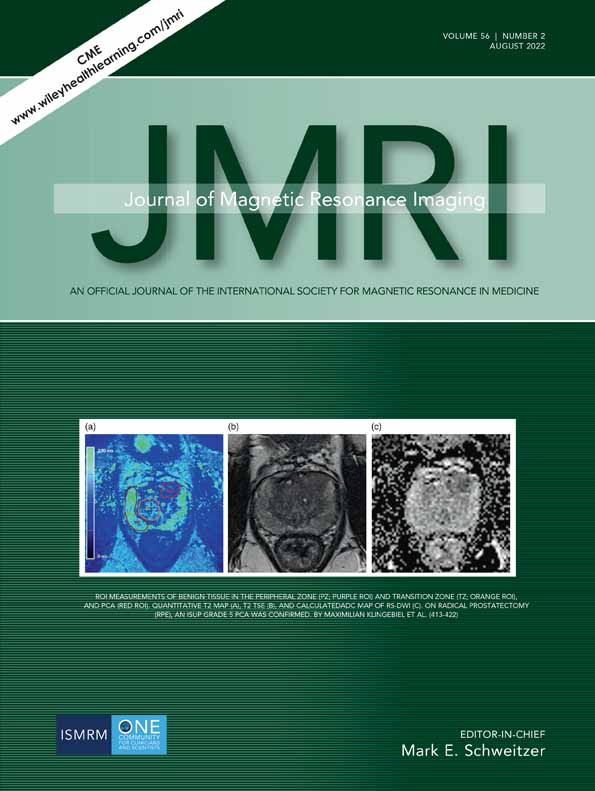Introducing a New Biomarker Named R2*-BOLD-MRI Parameter to Assess Treatment Response in Osteosarcoma
Abstract
Background
While histologic response to neoadjuvant chemotherapy (NChT) is the major prognostic factor for osteosarcoma treatment, evaluating that response is difficult.
Purpose
To evaluate the feasibility of the blood oxygen level-dependent (BOLD) technique to assess the response to NChT.
Study Type
Prospective.
Population
Twelve patients with osteosarcoma undergoing NChT.
Field Strength/Sequence
3 T; T2*-weighted BOLD, dynamic contrast-enhanced (DCE) and diffusion-weighted (DW) (b values of 0, 400, and 1400 seconds/mm2) sequences.
Assessment
Examination was performed before treatment (first), after each cycle of treatment (second and third). At each time point, spin dephasing rates (R2*) from BOLD magnetic resonance imaging (MRI), parameters from DCE-MRI (volume transfer constant [Ktrans], reflux rate [kep], volume fraction of the extravascular extracellular matrix [ve], and blood plasma volume [vp]), and the apparent diffusion coefficient (ADC) from DW-MRI were measured.
Statistical Tests
Wilcoxon's signed rank test, Spearman's correlation coefficient (ρ) were used. A P-value of <0.05 was considered statistically significant.
Results
The difference and relative difference of the R2* values between the first/third MRIs in the extraosseous portion were statistically significant. Only the differences in the kep values between the first/second and between the first/third MRIs in the extraosseous portion were significant. The differences in the ADCs in the extraosseous and osseous portions were not statistically significant (P = 0.151, P = 0.733 each in extraosseous portion and P = 0.569, P = 0.129 each in osseous portion). The relative difference in R2* values in the extraosseous portion between the first/third MRI (ρ = 0.706) was significantly better correlated with the pathologic grade than those of kep and ADC over the same period (ρ = 0.286 and ρ = −0.091, respectively).
Data Conclusion
The R2* from the BOLD MRI technique could be a useful biomarker for evaluating treatment response in osteosarcoma treated with NchT.
Level of Evidence
5
Technical Efficacy
Stage 2
Conflict of Interest
The authors declare no potential conflicts of interest.




